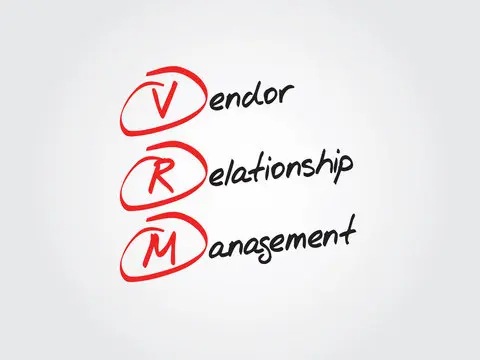In today’s highly interconnected and competitive business landscape, the success of an organization relies heavily on its ability to effectively manage relationships with its vendors. Vendor relationship management (VRM) has emerged as a strategic approach that enables businesses to foster mutually beneficial partnerships, optimize procurement processes, and drive long-term growth.
VRM encompasses a comprehensive set of practices and strategies aimed at building strong and collaborative relationships with vendors, suppliers, and partners. It involves establishing clear lines of communication, setting realistic expectations, and actively managing the vendor’s performance to ensure alignment with the organization’s objectives.
In this post, we’ll delve into the key benefits of vendor relationship management and explore its vital importance for businesses. Whether you run a small business or operate on a global scale, understanding the significance of vendor relationship management is crucial in today’s interconnected marketplace.

Definition and Components of VRM
Vendor relationship management can be defined as the systematic process of selecting, contracting, managing, and nurturing relationships with vendors and suppliers. It encompasses several key components that work in harmony to ensure smooth collaboration and achieve desired outcomes.
These components include vendor selection and evaluation, contract negotiation and management, performance monitoring and measurement, issue resolution and escalation, as well as relationship building and collaboration.
Benefits of Vendor Relationship Management
Enhanced operational efficiency is one of the significant benefits that VRM brings to businesses. By adopting effective vendor selection and evaluation processes, organizations can streamline their operations and choose the most suitable vendors. Additionally, meticulous contract negotiation and management enable organizations to secure favorable terms and conditions, leading to better overall outcomes.
Furthermore, continuous performance monitoring and measurement help track vendor performance, ensuring that they meet the established standards. By promptly addressing any issues that arise, businesses can maintain efficiency and minimize disruptions.
VRM also contributes to risk mitigation and cost reduction. Through comprehensive vendor evaluation and due diligence, organizations can identify potential risks and take necessary preventive measures.
By closely monitoring vendor performance and holding them accountable, businesses can minimize the financial and operational risks associated with unreliable vendors. Additionally, through effective VRM, organizations can identify cost-saving opportunities, negotiate better pricing, and optimize their vendor relationships to achieve cost efficiencies.
Improved service quality and customer satisfaction are also direct outcomes of successful VRM. By working closely with reliable vendors, businesses can ensure the timely delivery of high-quality products or services. This not only enhances internal operations but also improves the overall customer experience. Satisfied customers lead to increased loyalty, positive word-of-mouth, and ultimately, business growth.
Strategies for Effective VRM
To achieve effective VRM, businesses should adopt certain strategies. Clear communication and setting expectations are fundamental to establishing successful vendor relationships. Open lines of communication help foster transparency and trust, allowing both parties to discuss concerns, provide feedback, and align their objectives. By clearly defining expectations and deliverables, organizations can ensure that vendors understand their requirements and work towards meeting them.
Regular performance evaluation and feedback are vital for ongoing improvement. In fact, research has shown that data-driven businesses are growing at an average of 30% each year. By implementing performance metrics and key performance indicators (KPIs), organizations can measure vendor performance objectively.

This data-driven approach enables businesses to provide constructive feedback to vendors and identify areas of improvement. Collaborative partnerships should also be encouraged, where both parties work together to achieve shared goals. By treating vendors as strategic partners rather than mere suppliers, businesses can foster a sense of mutual growth and create long-term value.
Proactive issue resolution and conflict management are crucial in maintaining healthy vendor relationships. Promptly addressing issues and concerns helps prevent them from escalating into larger problems. Effective negotiation skills come into play when resolving conflicts, ensuring that both parties find mutually beneficial solutions.
Tools and Technologies for VRM
In order to facilitate effective vendor relationship management, organizations have at their disposal a range of tools and technologies that can be utilized. One such tool is vendor management software, which serves as a centralized platform for managing crucial aspects of the VRM process.
This software enables organizations to efficiently handle vendor information, contracts, and performance data. It streamlines various VRM activities such as vendor selection, contract management, and performance tracking, ultimately enhancing operational efficiency.
Contract management platforms are another valuable tool in VRM. They automate the workflow associated with contracts, ensuring compliance and reducing administrative burdens. By automating processes like contract creation, approval, and renewal, organizations can save time and resources while also maintaining legal compliance.
Furthermore, performance tracking and analytics tools play a vital role in VRM. These tools provide organizations with valuable insights into vendor performance, enabling data-driven decision-making and continuous improvement. By monitoring key performance metrics and analyzing vendor performance data, businesses can identify areas of improvement and make informed decisions regarding their vendor relationships.
Challenges in VRM
Implementing effective vendor relationship management is not without its challenges. One of the primary hurdles is vendor selection and evaluation, particularly when dealing with a significant number of potential vendors. Conducting thorough due diligence becomes crucial in order to identify the most reliable and suitable partners for the business. Additionally, the complexities of contract negotiation emerge as organizations strive to establish fair terms and conditions that safeguard the interests of all parties involved.
Another challenge lies in managing multiple vendor relationships. This task requires careful coordination and allocation of resources to ensure effective communication and collaboration with each vendor. Resolving conflicts and managing expectations can also prove to be difficult. However, maintaining an open dialogue and adopting a proactive approach can help overcome these obstacles and maintain harmonious vendor relationships.
Navigating these challenges is essential for businesses seeking to optimize their VRM practices. By addressing these hurdles head-on, organizations can foster stronger partnerships with vendors, enhance operational efficiency, and drive long-term success.
Final Thoughts
In today’s dynamic business landscape, the importance of effective vendor relationship management cannot be emphasized enough. By strategically nurturing and managing relationships with vendors, organizations gain a competitive edge and establish a solid foundation for growth, innovation, and enhanced customer satisfaction. VRM acts as the gateway to unlocking operational excellence and thriving in the fast-paced business world of today.